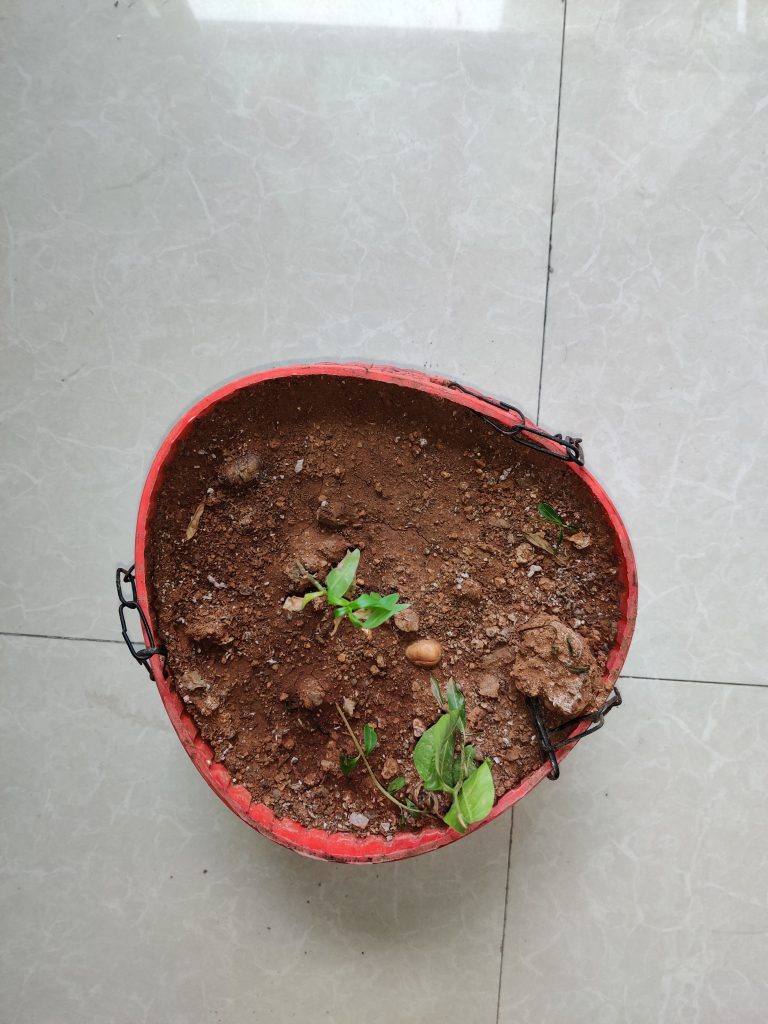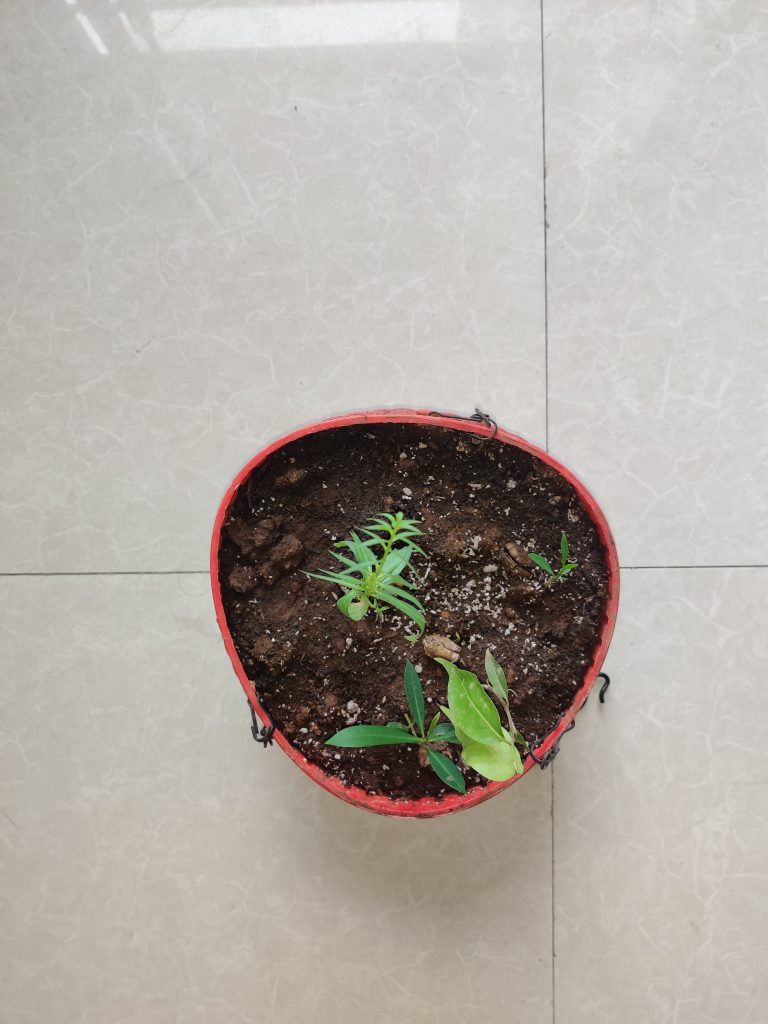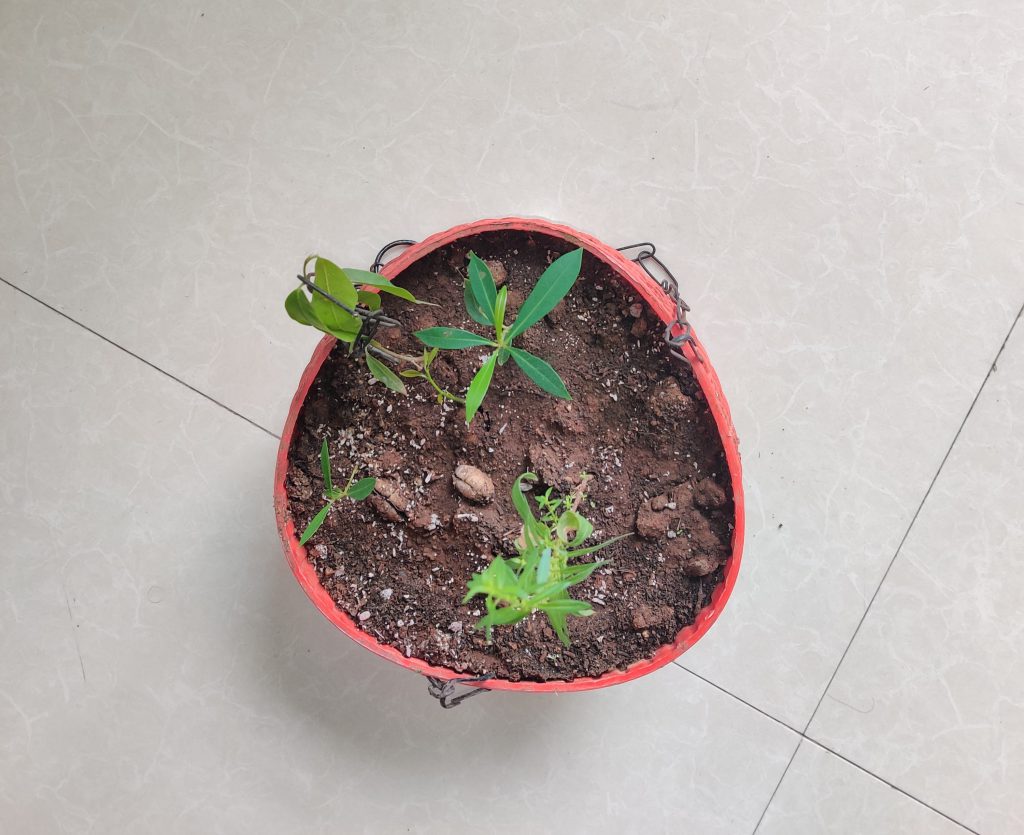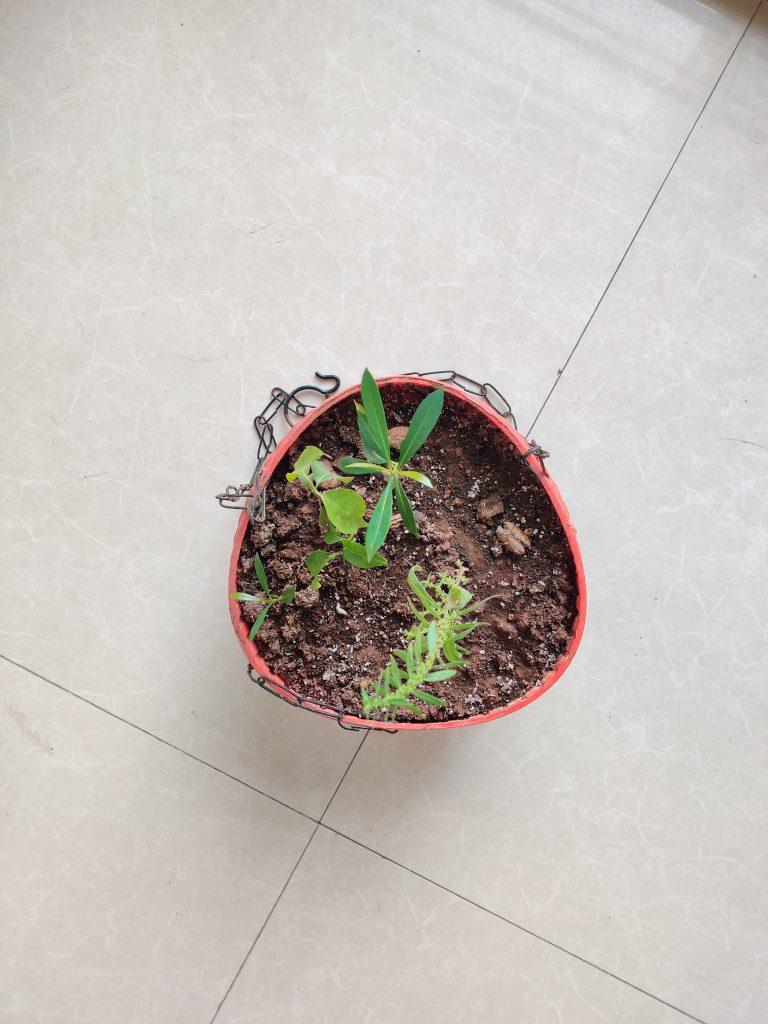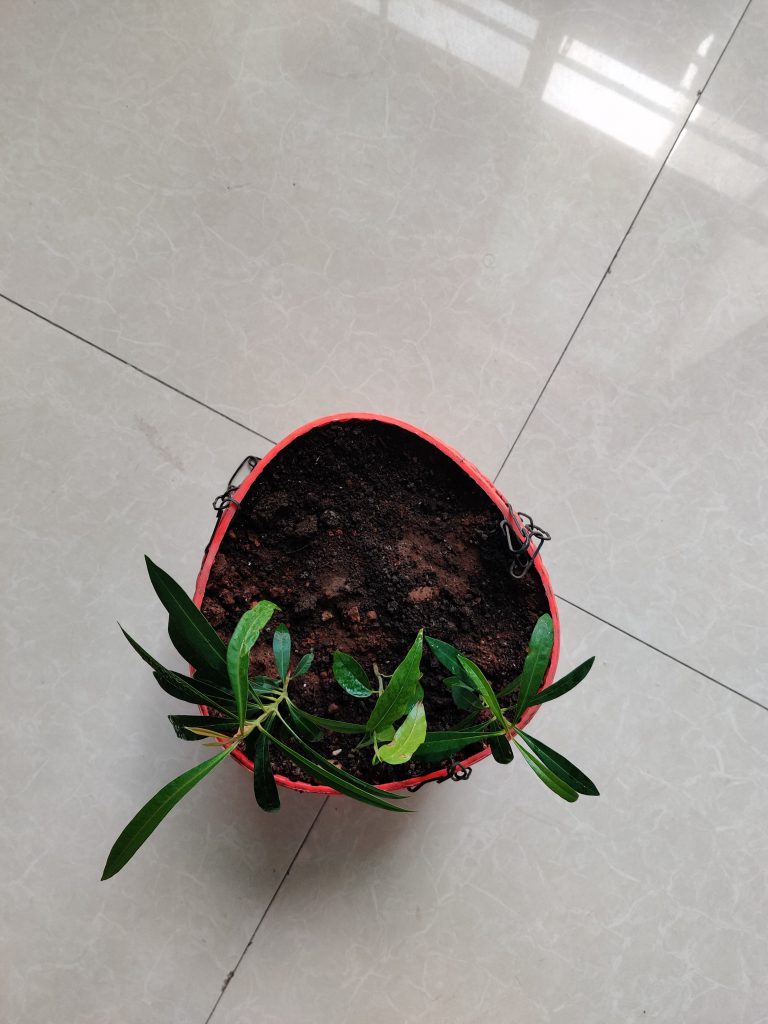Indoor air pollution is an issue that is not being talked about enough as due to indoor air pollution about 7 million people die every year as per WHO’s indoor air quality statistics. That being said one of the effective ways to tackle indoor air pollution is by indoor/house plantation, also I wanted to make a part of my house more aesthetically appealing.
However, previously I was unable to do indoor plantation due to a never-ending stream of assignments and examinations but due to CAS, I was able to do indoor plantation by planting a Monoon longifolium aka Asopalav or the false Ashoka. I planted this indoor plant on 10th August 2021, till 6 months I maintained the plant which means I maintained and grew the plant from 10th August 2021 till 10th February 2022. I choose the plant as it gives a good amount of oxygen compared to other indoor plants, it is an ideal plant to maintain for beginners, a great air purifier, and it is aesthetically appealing as well. Through the plantation, I catered to one of the SDGs; Good health and well-being, as by plantation I limited indoor air pollution which emphasized achieving good health and well-being (SDG) for my family and me.
The learner profiles I exhibited during this creative experience are inquirer, knowledgeable, and caring. Inquirer as I knew the problem but I didn’t know the ways I can tackle it so after a decent amount of research I came to a solution to achieve the SDG, and then I was seeking to learn indoor plantation. Then knowledgeable as after my experience I became more knowledgeable than before as now I know more and I have a new skill-set/know-how as well. Lastly, caring because I cared about my family’s and mine health due to the issue is prominent all across the world, especially in a country like India.
Moreover, the learning outcomes I demonstrated during the experience are L1, L2, L4, L6, and L7 as I identified my strength of being an inquirer, being persistent, and committed to developing new knowledge, and skills to maintain and growing an indoor plant for 6 months which showcases my persistence, dedication, and commitment as I needed to daily check the soil (in the flower pot), weather (humidity, precipitation, the season, etc.), and then accordingly pour water into the plant. Then in order to maintain and grow the plant, I overcame many challenges as this was the first time I was doing an indoor plantation in my life, the first time I brought the perfect fertile soil for the plant and sowed the seeds into the plant pot after several times by leveling and moisturizing the soil. Then when after 1 and a half months, my plant was about to die so I researched and overcame that challenge by feeding pesticides (especially during monsoon) and fertilizers to the plant every 15 days. Then I also made mistakes and learned from them as I gained experience such as overpouring the water in the plant, judging Lastly, I engaged with an issue of global significance which is indoor pollution which is not being talked about enough, and I considered the ethics of my choice and action as it was ethically and morally right to reduce the indoor air pollution in my house by plantation which positively affected my family’s and mine health, hence I considered the ethics of my choice and action (plantation here).
All in all, I am very pleased to learn about the indoor plantation, make a part of my house where the plant was there more aesthetically pleasing, reduce the indoor air pollution of my house, tackle a global issue, and try to meet an SDG. Below are all the pieces of evidence ;

